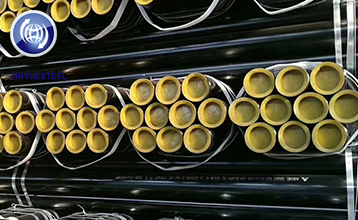Policy stacking pushes up steel prices
May. 19, 2021
"Records are used to break." This sentence cannot be more appropriate to describe the overall performance of the steel market in early May. The price of imported iron ore rushed to US$212.8/ton, breaking the historical ceiling; the price of hot-rolled coils was even more “sitting six and seven”; the price of billet, which was “slightly weaker,” also reached a high of 5,350 yuan/ton. The highest price in history is only one step away. Since entering May, the entire steel market has shown a trend in which the price of steel per ton per ton has risen by more than 100 yuan per day. Refreshing historical price records has become a common "routine operation" in recent times.

Why is the market so "hot"? In the author's opinion, the current high trend of the market is more stacked by various policy good news, the so-called "policy market." In particular, the following three policy news have a strong boost to this round of steel prices:
First, China has suspended all activities under the China-Australia Strategic Economic Dialogue indefinitely. Australia is one of the main sources of iron ore imports for Chinese steel companies. After the news was released, it was interpreted by the market as the subsequent decline in the supply of iron ore in Australia, which was good for the upward trend of ore prices, which led to an influx of long capital in iron ore futures. According to market behavior, the price of iron ore was rapidly pulled up, breaking through historical highs.
Second, the Ministry of Industry and Information Technology announced a new version of the "Implementation Measures for Capacity Replacement in the Iron and Steel Industry" on May 6. Compared with the old version, the new version has increased the replacement ratio and expanded the scope of replacement, and is considered by the market as a "new version of the supply-side structural reform of the steel industry." Therefore, the market's expectation of the subsequent reduction in resource supply has been greatly strengthened, and bullish sentiment has further increased.
The third is that India's new crown pneumonia epidemic situation has become more severe, and overseas demand has recovered, and domestic steel companies have ushered in good export opportunities. It is understood that India is the main source of cold-rolled products in many European and American countries. The expansion of the local epidemic has caused downstream companies in many European and American countries to transfer purchase orders to Chinese steel companies. Therefore, in the short term, my country's steel exports will still maintain a relatively high growth trend, and the possibility of a large-scale return of export resources is temporarily unlikely. This will make the domestic market due to the "dual carbon" (carbon peak, carbon neutral) policy to bring the demand gap repair cycle to be lengthened. Boosted by the mismatch of supply and demand, steel prices have risen further.
It is under the impetus of multiple policies that the steel market has risen. Take Shagang as an example. On May 1, Shagang introduced a new round of steel price policy. Based on April, the company’s hot coil, high-speed wire, and coiled snail prices were all raised by 450 yuan/ton, and rebar prices were raised. 300 yuan/ton.
Under the influence of the expected reduction in supply and the strong performance of raw materials and fuels, steel companies have chosen to hold up prices, which made the steel price rise in May stronger. The author predicts that the possibility of steel prices surpassing historical highs later cannot be ruled out. But at the same time it should be noted that while steel prices continue to heat up, market risk exposures are also expanding.
On the one hand, the current increase in steel prices is mainly due to expected increases, and the demand support for rising steel prices is not stable; on the other hand, under the "dual carbon" policy, the mismatch of supply and demand and resource shortages caused by environmental protection production restrictions are only regional , Not nationwide. At this stage, the absolute resource supply in the market is not shrinking substantially, and the gap in market supply and demand is slowly being repaired. Even in a bull market, prices will not only rise or fall. Moreover, the current market is a "policy market" rather than a bull market relying on fundamentals. Once the realization of later market expectations is blocked, steel prices may fall from high levels.
The author suggests that it is not advisable to blindly chase the rise in the current market. Market participants should pay close attention to the end users’ tolerance and the possible disturbance of the “policy cooling” to steel prices. At the same time, they should adjust their business strategies in time to avoid An is the best choice.



